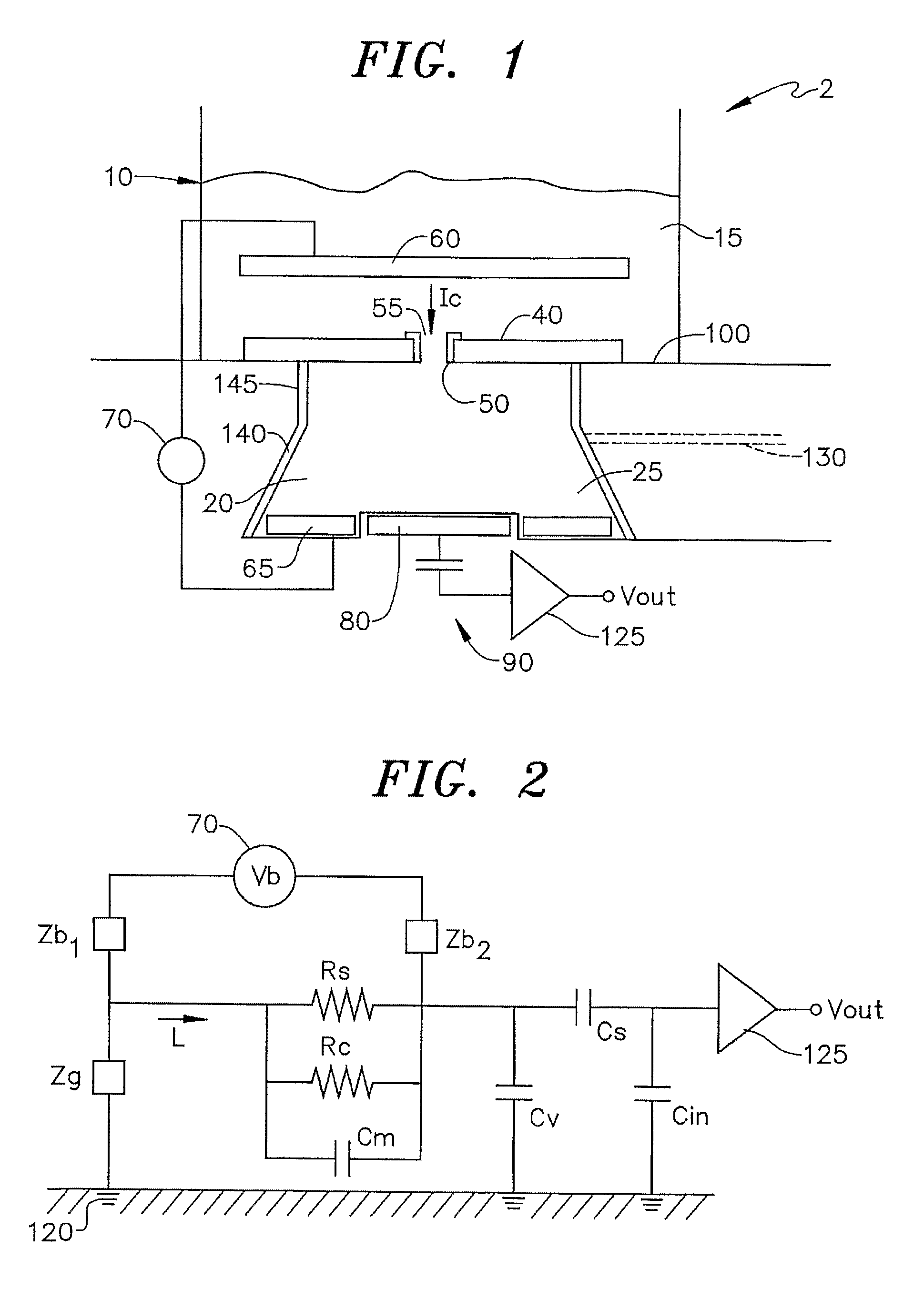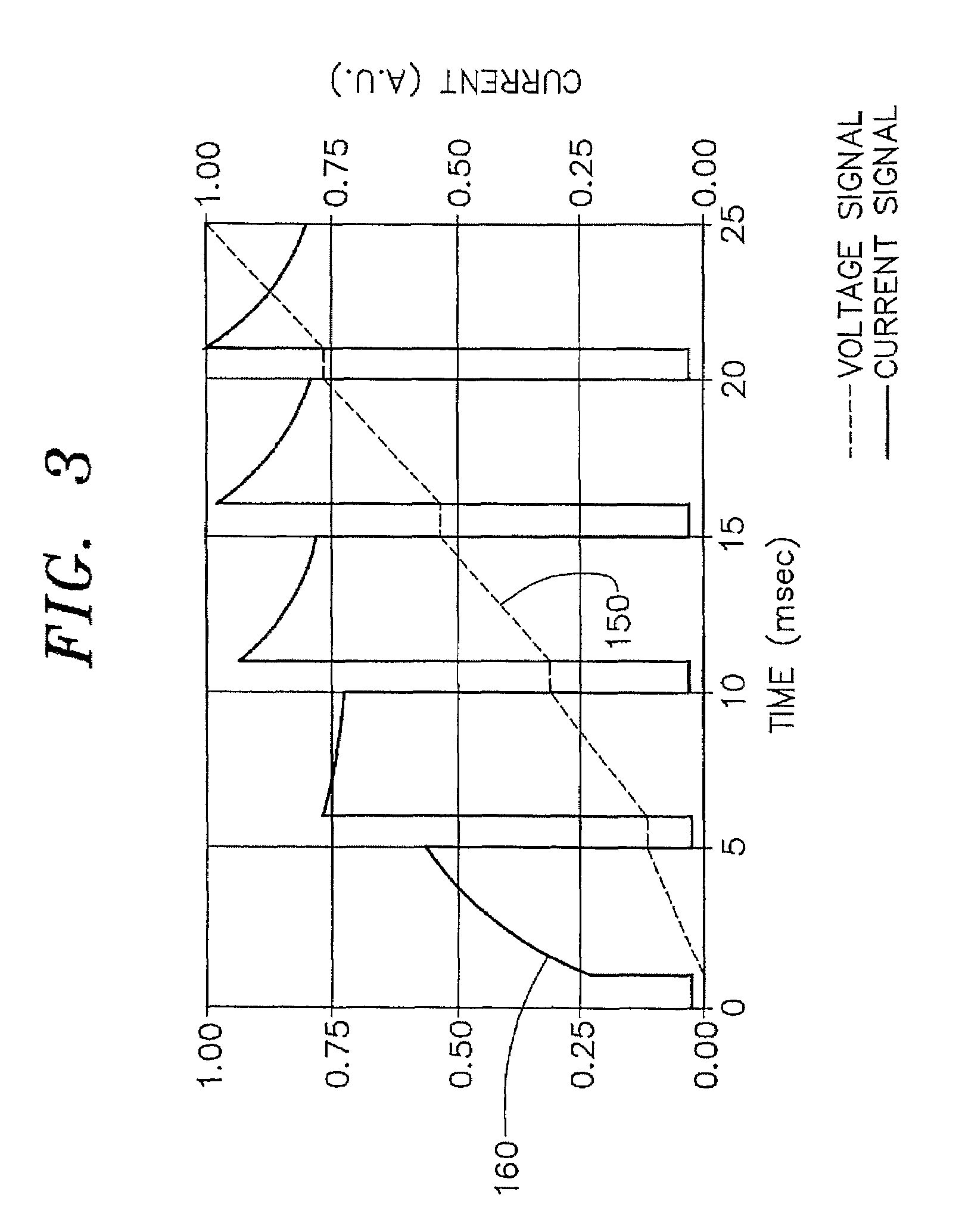Method and apparatus for sensing a time varying current passing through an ion channel
a technology of ion channels and electrical currents, applied in the direction of resistance/reactance/impedence, instruments, material electrochemical variables, etc., can solve problems that are not typically done, and achieve the effect of less overall effect on system noise and capacitance reduction
- Summary
- Abstract
- Description
- Claims
- Application Information
AI Technical Summary
Benefits of technology
Problems solved by technology
Method used
Image
Examples
second embodiment
[0045]In accordance with the present invention which is illustrated in FIG. 4 and functionally similar to sensing system 2 described above, a sensing system 2 includes a membrane 40′ located directly on a capacitive sensing electrode 80′ and substrate 100. This geometry is referred to as a supported Membrane, whereas membrane 40, shown in FIG. 1, constitutes a suspended membrane. Membrane 40′ can be supported on a hard surface, such as capacitive sensing electrode 80 and substrate 100 by a variety of methods not shown in FIG. 4 that include: ultra thin viscous films, hydrophilic polymers, soft polymer cushions, aerogels, xerogels, and tethers. With this arrangement, there is no necessity to fabricate sensing volume 20, e.g., by etching a hole in silicon.
third embodiment
[0046]In accordance with the present invention as illustrated in FIG. 5, a sensing system 2″ positions capacitive sensing electrode 80′ near channel 50 either directly in contact or in the same manner as support membrane 40′ shown in FIG. 4. First electrode 60′ is positioned substantially closer to channel 50 in bath 10 and includes a hole 175 to allow the ionic current to enter channel 50. This geometry has the capability of measuring voltage variations directly across channel 50. Locating first electrode 60′ so close to channel 50 (note electrode 60′ could be atop membrane 40′) requires depositing a material similar to that used to support membrane 40′ and fabricating a conducting surface over that material. The presence of electrode 60′ could be used to corral channel 50 in the desired region of membrane 40′. While technically challenging, the resulting embodiment of the invention enables the electric field across channel 50 to be measured directly.
[0047]In general, the present i...
PUM
| Property | Measurement | Unit |
|---|---|---|
| thickness | aaaaa | aaaaa |
| thickness | aaaaa | aaaaa |
| thickness | aaaaa | aaaaa |
Abstract
Description
Claims
Application Information
 Login to View More
Login to View More - R&D
- Intellectual Property
- Life Sciences
- Materials
- Tech Scout
- Unparalleled Data Quality
- Higher Quality Content
- 60% Fewer Hallucinations
Browse by: Latest US Patents, China's latest patents, Technical Efficacy Thesaurus, Application Domain, Technology Topic, Popular Technical Reports.
© 2025 PatSnap. All rights reserved.Legal|Privacy policy|Modern Slavery Act Transparency Statement|Sitemap|About US| Contact US: help@patsnap.com



